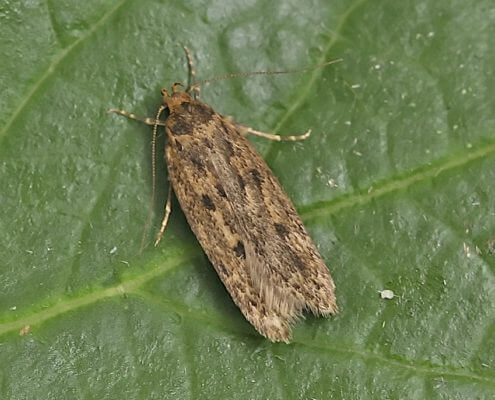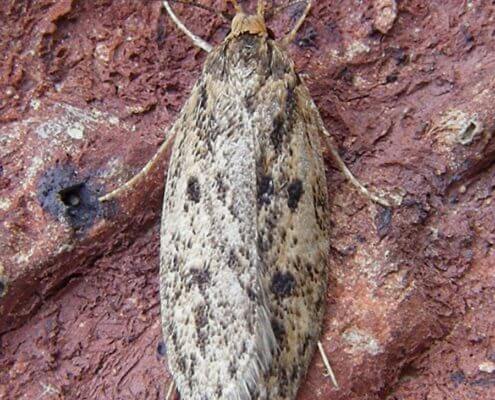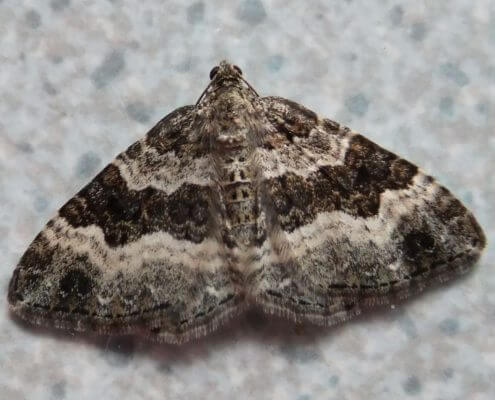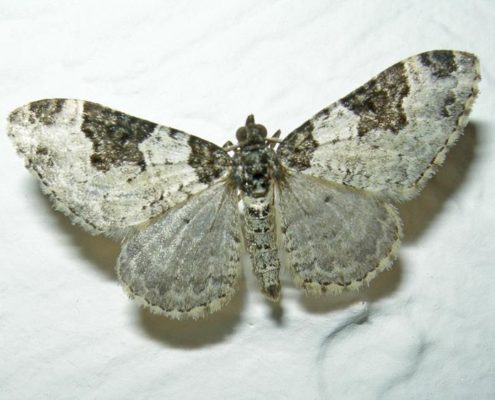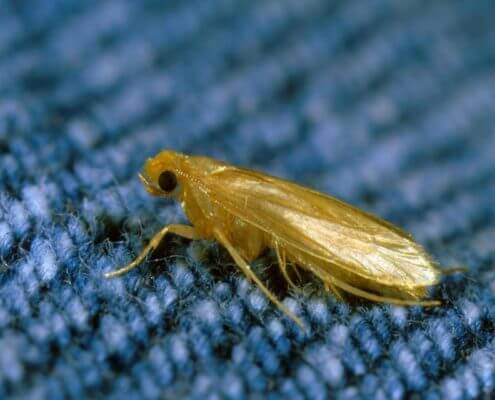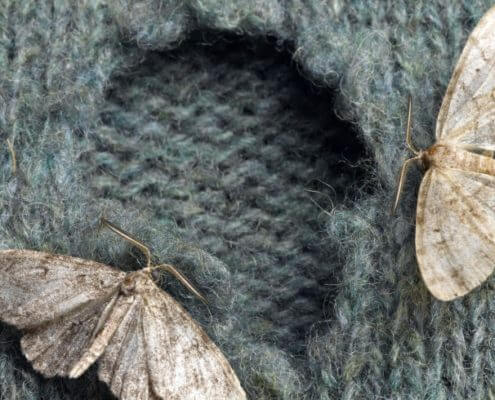Cloth Moth
There are several species of clothes moths, all of them characterised by folding their wings tent-wise along their backs. The adult Common Clothes Moth is 6 to 7mm long with pale, plain golden-buff wings fringed with hair. The rarer Case-Bearing Clothes Moth is duller and has three dark brown spots on each of its wings.
Clothes Moth-1The adults do no damage when feeding. It is the larvae which hatch from the sticky eggs that eat wool, hair, fur or feathers – with a preference for blankets, wool carpets, wool garments or upholstery that have been soiled with perspiration or food. The grubs are white caterpillars with golden-brown heads, which spin a hiding place of characteristic loose silk webbing, beneath which they feed.
They make irregular holes in textile fabrics and pupate as silken cocoons. The Case-Bearing Clothes Moth grub produces an open ended cylindrical case of silk as it feeds, and attaches fibres of its food material to this in order to camouflage itself.
Brown House Moth
The commonest of the so-called clothes moths, with characteristic golden-bronze wings, flecked with black, folded flat along its back. The adult is about 8mm long and prefers to run rather than fly.
They grow up to 18mm long, feeding on wool, hair, fur, feathers, cork or debris from food such as dried fruit or cereals, and are common scavengers in old birds’ nests, from which they may enter buildings.
The related White Shouldered House Moth has mottled wings with a white head and “shoulders” where the wings join the body. Eggs are attached to fabric on which grubs will feed. The larvae are creamy-white caterpillars with brown heads.
The caterpillars spin silken cocoons in which they pupate. The life cycle takes several months to complete. Only the larval stage feeds, as a general scavenger as well as a textile pest.
Remedy
Man-made fibres have reduced the house moth problem, but sensible precautions include scrupulous cleaning of all woollens and storing them and furs in sealed polythene bags or closely wrapped in paper in tightly closed drawers or cupboards – preferably in a cool room.
Fold in a disc of moth repellent. Hang moth repellents in wardrobes. Before putting clothes in storage, spray them with an aerosol moth-proofer. Modern moth repellents do not all smell of naphthalene.
Clear out old birds’ nests or pieces of fabric from the loft.
Clean carpets regularly paying special attention to the edges. Spray any affected garments, fabrics, wool or carpets with a proprietary aerosol moth-proofer, especially along seams, folds and into any gaps in floors or shelves where fluff collects. Spray the underfelt (not rubberised underlays) and the carpet backing. Upholstery can be sprayed with moth-proofer or it can be fumigated by a suitably qualified contractor.
Having problems with Moths?
CLICK HERE TO CONTACT US NOW
All photos copyright their respected owners, photos provided for educational & identification purposed only.

